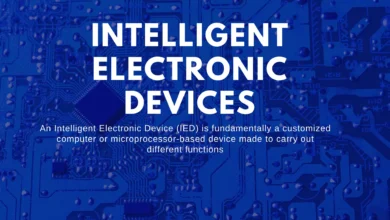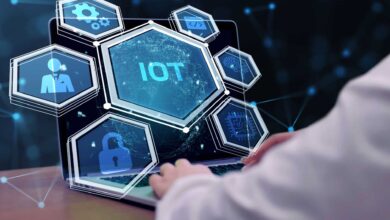What are IoT Devices? A Complete Guide

The Internet of Things (IoT) is transforming the way we live and work by connecting everyday objects and devices to the Internet. This allows them to send and receive data, be controlled remotely, and work together in smart networks. But what exactly are IoT devices and how do they work? This comprehensive guide will explain everything you need to know.
What is the Internet of Things (IoT)?
The Internet of Things refers to the billions of physical internet-connected devices around the world that collect and share data. These IoT devices use embedded sensors, processors and communication hardware to connect to the internet and each other. This allows them to send and receive data in real time without needing human intervention.
The IoT is creating a world where just about any physical object can be transformed into a smart device that connects to the internet to interact with data and other devices. From smart homes to wearables, from autonomous vehicles to smart cities, IoT is leading the way to a more connected world.
How IoT Devices Work
An IoT device is essentially any non-standard computing device that connects wirelessly to a network and can transmit data. This allows it to be monitored and controlled remotely across an internet network.
Here are the key components that make IoT devices function:
- Sensors – These detect and measure data from the surrounding environment such as motion, temperature, light, etc.
- Connectivity – This allows the device to connect to the internet via WiFi, Bluetooth, cellular data networks, satellite, etc.
- Data transmission – The sensor data is transmitted from the device to the cloud.
- Data processing – The data is processed using analytics and artificial intelligence on the cloud.
- User interface – A dashboard or app allows users to access, monitor and control the device remotely.
- Unique identity – Each device has a unique IP address to identify itself on networks.
- Security – Data encryption and authorization protocols protect the data transmission and access.
This allows the IoT device to collect data, communicate with other connected devices and services, receive commands, and perform pre-programmed functions, all through the internet.
Examples of IoT Devices
Here are some common examples of IoT devices that are impacting homes, businesses, medicine, transportation and more:
- Smart home devices – Smart thermostats, security cameras, smart locks, smart appliances, and voice assistants like Amazon Alexa.
- Wearable tech – Fitness trackers and smartwatches that collect biological data.
- Medical devices – Pacemakers, biochip transponders, and digital medicine tracking devices.
- Industrial Internet – Sensors and automation software in manufacturing equipment.
- Connected cars – Vehicles with built-in WiFi, Bluetooth and cellular connectivity.
- Smart grids – Smart meters that relay electricity usage data to suppliers.
- Commercial IoT – Smart sensors that monitor inventory, and alert when supplies are low.
- Environmental monitoring – Air quality sensors, flood detection systems, forest fire warning systems.
- Agriculture – Smart farming equipment, livestock biometrics, crop sensors monitoring soil moisture and nutrition.
And many more! Essentially any device or machine can be made “smart” by adding sensors and internet connectivity to it.
Benefits of IoT Devices
Here are some of the key benefits that IoT devices offer for consumers, businesses and society:
- Convenience – IoT provides ease, automation and control of many everyday tasks and processes.
- Efficiency – IoT allows for the optimization of systems and reducing waste through smart data analytics.
- Time and money savings – Efficient automation of tasks saves significant time and expenses.
- Safety and security – IoT devices can monitor for threats, alert emergency services, and provide surveillance.
- Health benefits – Wearables monitor vital signs and fitness while medical IoT saves lives.
- Improved customer experiences – Smart retail, transportation and services powered by IoT are more personalized and seamless.
- Better business insights – IoT provides businesses with rich data analytics on systems, supply chains, customers, etc.
- Environmental benefits – IoT sensors can monitor pollution, weather, and wildlife to help conserve the environment.
The applications of IoT devices are limitless. Virtually every industry, business function and living environment can be enhanced through connected, data-driven IoT technology.
IoT Connectivity and Communication Protocols
For IoT devices to transmit sensor data and communicate, they must be connected to a network. There are various ways this connectivity can be implemented:
WiFi – Most common protocol using wireless local area network technology. Best for indoor use.
Bluetooth – Used for short-range communication up to 30 feet. Low energy usage.
Cellular – Uses cellular data networks (2G, 4G LTE, 5G). Allows long-range connectivity.
LoRaWAN – Low power, long-range protocol perfect for rural, outdoor use.
Zigbee – Mesh network protocol best suited for industrial IoT uses.
NB-IoT – Narrowband IoT protocol specifically for low power wide area networks.
Satellite – Can provide connectivity in extremely remote locations.
IEEE 802.11.ax – Next-gen WiFi protocol for congested IoT networks with high bandwidth demands.
Many IoT devices use multiple protocols. For example, a smart car might have WiFi, Bluetooth and cellular connectivity all built in. The protocol choice depends on bandwidth and range requirements, power constraints, and deployment location.
IoT Communication Architecture
IoT devices connect to certain architectural layers to communicate and transmit data securely:
Device/Perception Layer – This consists of the sensors, processors, firmware and connectivity that make the device function.
Network Layer – Wireless protocols connect the device to the internet gateway and transmit data.
Edge Computing Layer – Some data processing and analytics happen at this intermediary layer before sending data to the cloud.
Platform Layer – The centralized IoT platforms for device management, data storage and application enablement.
Application Layer – Consists of the software applications and user interface where data is analyzed, visualized and accessed.
Data flows from device to network to platform and application layers where it can be stored, processed and accessed to drive software functions and interactive dashboards.
IoT Security Risks
While IoT devices offer many benefits, they also come with cybersecurity risks in an increasingly connected world:
- Data privacy – Personal data collection raises concerns about privacy and ethical data use.
- Weak passwords – Many default device passwords are easy for hackers to guess.
- Unencrypted networks – Data can be intercepted if not encrypted properly during transmission.
- Software vulnerabilities – Bugs or backdoors in code can be exploited to gain access.
- DDoS attacks – Botnets of compromised IoT devices can execute distributed denial of service attacks.
- Ransomware – Malware can lock access and demand ransom to restore control.
- Spying – Camera or mic-enabled devices can potentially enable remote spying.
- Identity spoofing – Fake devices can infiltrate networks while impersonating legitimate ones.
To mitigate risks, IoT devices should be continuously updated and secured with strong encryption, multi-factor authentication, access controls and more. Users and organizations need to take security seriously when deploying and managing IoT ecosystems.
The Future of IoT
The IoT landscape continues to grow at a remarkable rate. There are currently over 10 billion connected IoT devices worldwide as of 2021, a number that is expected to grow to over 25 billion by 2025, and 75 billion by 2025.
Here are some key predictions for the future adoption of IoT technologies:
- Growth in industrial and manufacturing IoT applications.
- Continued adoption in smart homes and smart cities.
- Developments in artificial intelligence, machine learning and edge computing to power the IoT.
- 5G networks enable faster and more robust IoT connectivity.
- Increasing use of augmented reality/virtual reality in conjunction with IoT devices.
- Evolution of autonomous vehicle networks powered by vehicle-to-everything (V2X) communication systems.
- Growth of IoT devices in healthcare, logistics, agriculture, retail and many industries.
- Stricter cybersecurity measures, regulations and standards for data protection.
The possibilities for our connected future enabled by the Internet of Things are limitless. As the supporting technologies continue to develop alongside new applications across industries, IoT will increasingly impact and benefit our lives in the years to come.
Frequently Asked Questions about IoT Devices
Here are answers to some commonly asked questions about the Internet of Things devices:
What are the components needed for an IoT device?
An IoT device needs sensors to collect data, connectivity to the internet via protocols like WiFi or Bluetooth, processors to run firmware and enable communication, and a user





